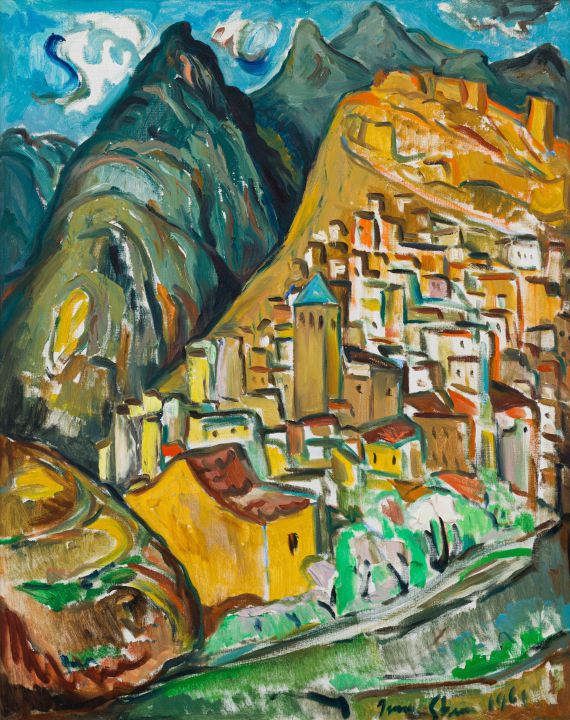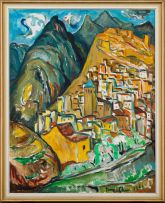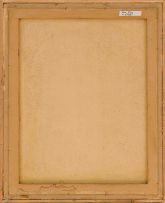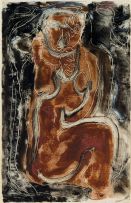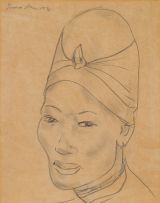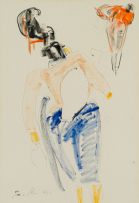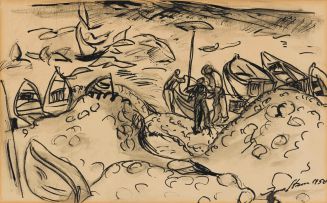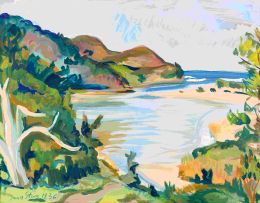Spanish Village
Irma Stern
Incl. Buyer's Premium & VAT
About this Item
signed and dated 1961
Notes
Painting small, cube-like buildings nestling against a steep mountain is a subject one would normally associate with the post-impressionist Paul Cezanne, not with the expressionist Irma Stern. Other examples of this subject matter and composition can be found in singular paintings Stern executed while visiting Tuscany, Turkey, North-Africa and Madeira. Spain, which she visited in the summer of 1960, had a special allure for Stern, and her paintings of Spanish pimento harvesters and olive pickers are well-known, paintings that Neville Dubow describes as 'lyrical figures-in-landscape compositions, loosely knit, yet held together by sweeping rhythms that bind earth, workers and sky together'.1
Another well-loved subject was the harbour, in the small Spanish coastal town of Alicante, located across the road from the Carlton Hotel where she stayed. Stern vividly describes this enchanting view from her room in letters to her good friends, Richard and Freda Feldman, in Houghton, Johannesburg.2 She also writes about the day trips she undertook, exploring the surrounding villages and farms, and the numerous sketches she made, which served as inspiration when painting works such as the present lot. It exhibits a quiet lyricism, of small buildings in harmony with their dramatic surroundings.
It is also striking how similar this strong composition of cube-like buildings on top of one another is to the work of Gladys Mgudlandlu who painted numerous scenes of Gugulethu and Nyanga outside Cape Town, especially in the period 1961 to 1971. Mgudlandlu made a point of attending every exhibition Maggie Laubser held in Cape Town, and she might also have seen some of Stern's exhibitions as well. Mgudlandlu's characteristic cube-like shanty buildings nestle against a dramatic Table Mountain in the background in a similar manner to the village in Stern's Spanish village.
1. Neville Dubow (1974) Irma Stern, Cape Town: Struik, page 21.
2. Sandra Klopper (2017) Irma Stern: Are You Still Alive? Stern's life and art seen through her letters to Richard and Freda Feldman, 1934-1965, Cape Town: Orisha, page 207.
